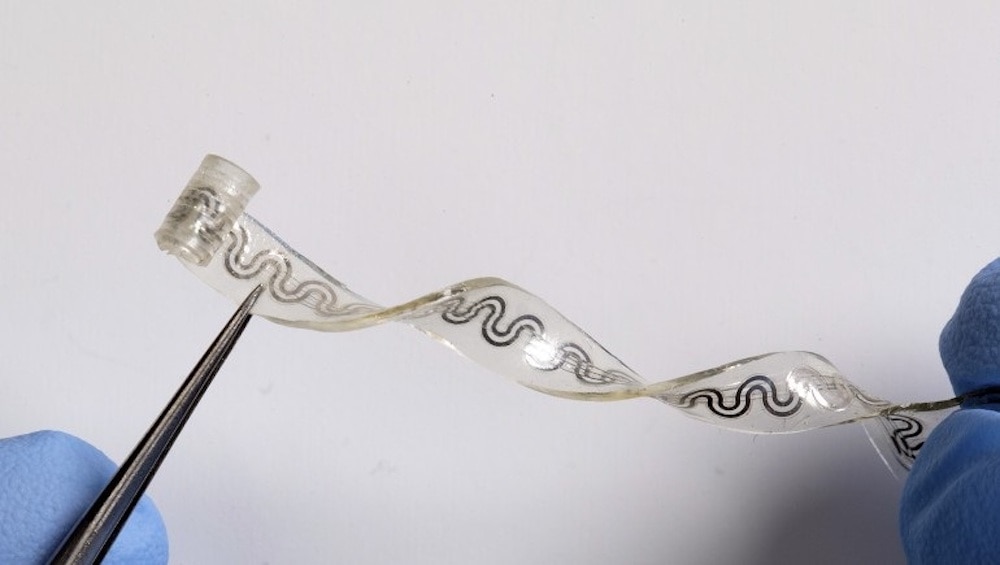Create a free profile to get unlimited access to exclusive videos, sweepstakes, and more!
An air conditioner for your nerves could be the future of pain relief
Imagine if you could freeze your pain in its tracks.

In the 1995 military comedy Major Payne (now streaming on Peacock!), the titular character has an unconventional method for dealing with pain. During an engagement, when another Marine was injured, Major Payne offered a trick to help him take his mind of the pain. That trick involved breaking his finger, giving him something else to focus on. While that might be effective in its own way, it’s not exactly the comforting therapy medical professionals are looking for.
Often, when recovering from a major surgery, patients might be prescribed opioids of some kind to dull the pain while they heal. As a class of drugs, they are highly effective at mitigating pain, but they are also highly addictive and carry the risk of overdose. Consequently, scientists are on the lookout for alternative methods of pain management which are just as effective without the potential dangers.
Jonathan Reeder from the Department of Materials Science and Engineering at Northwestern University, along with colleagues, have developed a device which freezes your pain in place before it can ever reach your brain. Their results were published in the journal Science.
If you’ve ever let your fingers get really cold while outside playing in the snow, you’ve probably noticed that at a certain point you start to lose feeling. That’s because temperature regulates how well your nerves transmit information and below a certain point they don’t work as well. This new pain management device operates on a similar philosophy, cooling the nerves until they slow down and eventually stop transmitting pain signals altogether.
“We are optimistic that this approach presents a very promising starting point for a novel method of blocking pain, but readers should be cautioned that, as with any implantable device, the regulatory process can be slow, typically involving much more extensive animal model studies over a period of years,” Reeder told SYFY WIRE.
Those animal studies are already in progress. The device has been tested in rats and the results were promising. Made of soft, flexible material, the device was implanted into the rats’ bodies and coiled around a target nerve. That aspect is important, as it allows doctors and scientists to target a specific nerve without impacting the surrounding tissues or impeding any other nerves which might be related to motor functions. In experiments, the team was able to apply about seven times the normal amount of pressure before rats exhibited a response.
In practice, the idea is that this cooling device would be implanted at the same time as a surgical operation, preventing the need of any additional trauma to the body. It would then deliver pain relief over a period of days or weeks until the materials dissolved into the body. How long it lasts inside the body depends on a number of factors and is moderately customizable.
“The degradation timeline depends on the materials such as polymers, chemistry, etc. and device geometry, the thickness, and so is controllable by changing those parameters,” Reeder said.
Once implanted, the cooling effect can be controlled by the patient by way of external hardware connected to it in a manner similar to an IV. In future iterations, scientists hope to miniaturize the hardware into something that could be worn on the wrist.
When activated, a liquid coolant travels down one channel inside the implant while gaseous nitrogen travels down another. When the liquid and gas meet in a shared chamber the liquid rapidly evaporates, causing the surrounding area to cool. In principle, it’s not all that different than the way sweat cools your body through evaporation, or the way evaporative coolers work to drop the temperature inside your house. In essence, it’s targeted air conditioning aimed at a specific nerve. As the reaction pulls heat away from the nerve the signal strength between it and your brain slows down and eventually stops, preventing the transmission of pain. A built-in sensor keeps an eye on the tissue temperatures and prevents them from getting so cold that they are damaged. Maintaining the balance between pain relief and tissue health is a critical component of the device’s success.
“We did not observe side effects in our study, but understanding the biological consequences of cooling is a focus of future work. A key next step is determining a dosing and titration schedule for this approach to pain relief. In other words, how cold and for how long can we cool a nerve to maximize the pain relief while preventing undesired side effects,” Reeder said.
Despite the strength of its foundational premise and successful animal tests, there’s still a lot of research needed before it can make its way into clinical applications in humans. With any luck, future humans will be able to control their level of pain with the push of a button. That’s pretty cool.


























